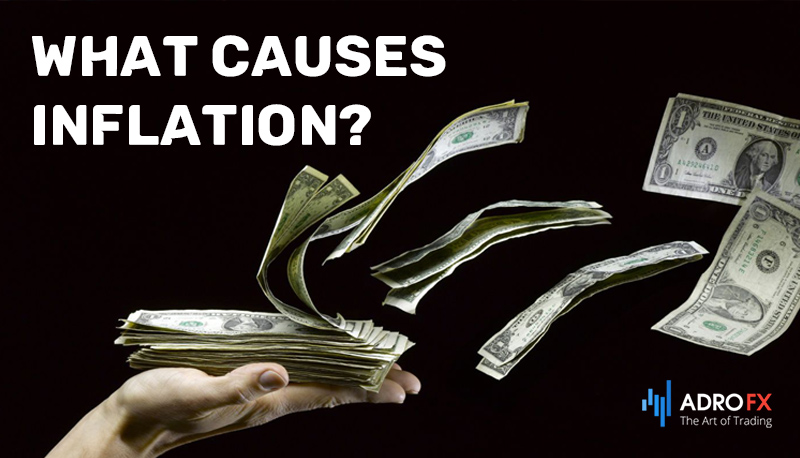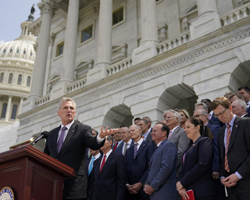How to Trade and Invest in Periods of High Inflation

In the realm of finance, adaptability is paramount, especially during periods of economic turbulence. As inflation rates surge and financial landscapes experience shifts, mastering the art of trading and investing becomes more critical than ever. In this article, we delve into a timely and crucial topic: "How to Trade and Invest in Periods of High Inflation." Inflation, a formidable force that can erode purchasing power and reshape economies, demands a strategic approach. Join us as we navigate the intricacies of trading and investing in the midst of inflationary pressures, uncovering strategies, insights, and expert advice to navigate these challenging waters and make informed decisions that can safeguard and potentially grow your wealth.
What Is Inflation and Why Does It Matter?
Inflation refers to the general increase in prices of goods and services in an economy over time. It means that, on average, you need more funds to buy the same things you could purchase before with less capital. Inflation is typically measured as an annual percentage, indicating the rate at which prices are rising.
Inflation matters for several reasons:
- Purchasing Power Erosion
As prices rise, the purchasing power of currency decreases. This means that your finances can buy fewer goods and services than it could before. This can impact people's ability to maintain their standard of living and save for the future. - Uncertainty
High or unpredictable inflation can create uncertainty in the economy. Businesses and consumers might struggle to plan for the future if they can't predict the cost of goods and services accurately. - Income Redistribution
Inflation can lead to a redistribution of income and wealth. Those who owe funds benefit from inflation (because the value of their debts decreases over time), while savers and people on fixed incomes may suffer. - Interest Rates
Central banks often respond to high inflation by raising interest rates. Higher interest rates can impact borrowing costs for individuals and businesses, potentially slowing down economic growth. - Investment and Savings
Inflation can influence investment decisions. People might opt for riskier investments or assets that tend to perform well during inflationary periods, like real estate or commodities. - Wage Pressure
High inflation can lead to demands for higher wages as people seek to maintain their purchasing power. This can create a cycle where wage increases drive further inflation. - International Competitiveness
If a country's inflation rate is significantly higher than that of its trading partners, its exports might become more expensive, leading to a decline in international competitiveness. - Policy Considerations
Governments and central banks closely monitor inflation rates as part of their economic policy decisions. They might adjust monetary policy (like interest rates) or fiscal policy (like government spending) to manage inflation and promote economic stability. - Hyperinflation
Extremely high and uncontrolled inflation, known as hyperinflation, can lead to economic chaos, currency devaluation, and loss of confidence in the monetary system. This has severe social and economic consequences.
Overall, moderate and stable inflation is generally considered healthy for an economy, as it can encourage spending and investment. However, high or rapid inflation can have detrimental effects on economic stability and individual well-being. Central banks and governments aim to maintain a balance to avoid both deflation (falling prices) and excessive inflation.

What Causes Inflation?
Inflation is caused by a variety of factors, and its exact causes can vary from one period of time to another and from one economy to another. Economists have identified several key factors that can contribute to the onset of inflation:
- Demand-Pull Inflation
This occurs when the demand for goods and services in an economy exceeds its supply. When demand outstrips supply, businesses may raise prices to capitalize on the high demand. This type of inflation is often associated with strong economic growth and low unemployment. - Cost-Push Inflation
Cost-push inflation is driven by increases in production costs, such as wages or the prices of raw materials. When businesses face higher costs, they may pass those costs onto consumers by raising prices. Events like supply disruptions, increased oil prices, or wage hikes can trigger cost-push inflation. - Built-in Inflation
Also known as wage-price inflation, this occurs when workers demand higher wages to keep up with rising prices, and businesses then raise prices to cover the increased labor costs. This creates a feedback loop where wages and prices chase each other upward. - Monetary Factors
An increase in the capital supply without a corresponding increase in the supply of goods and services can lead to inflation. When there is more bills in circulation but the same amount of goods available, each unit of currency becomes less valuable, leading to rising prices. - Supply Chain Disruptions
Natural disasters, geopolitical conflicts, trade disruptions, or other events that disrupt supply chains can lead to shortages of goods, which can, in turn, lead to higher prices. - Expectations of Future Inflation
If people expect prices to rise significantly in the future, they may adjust their behavior by buying now rather than later, which can drive up demand and prices in the short term. - Government Policies
Some government actions can contribute to inflation. For example, excessive government spending or budget deficits financed by borrowing can increase the capital supply and lead to inflation. Governments may also engage in direct notes printing, though this is less common in well-managed economies. - Exchange Rates
Inflation can be imported through changes in exchange rates. If a country's currency depreciates relative to other currencies, the cost of imported goods and services can rise, leading to higher domestic prices. - Global Factors
International events, such as changes in global commodity prices (like oil) or economic shocks in other countries, can impact inflation in interconnected economies.
Economists and policymakers use various economic models and data to understand the interplay of these factors and to formulate strategies for managing inflation effectively. 
How Inflation Affects Companies
Inflation can have significant effects on companies across various aspects of their operations, financials, and strategies. Here are some ways in which inflation can impact businesses:
- Costs and Return Margins
One of the most direct impacts of inflation on companies is the increase in production costs. If the prices of raw materials, labor, and other inputs rise, it can squeeze return margins. Companies may find it challenging to maintain the same level of lucrativeness unless they can pass on these cost increases to their customers through higher prices. - Demand and Pricing
Inflation can influence consumer purchasing behavior. As prices rise, consumers may cut back on discretionary spending, leading to reduced demand for certain products or services. Companies might need to adjust their pricing strategies to remain competitive while covering higher costs. - Supply Chain Disruptions
Inflation can be triggered by supply chain disruptions, but it can also be the cause of such disruptions. If key inputs become more expensive or scarce, companies may face challenges in maintaining consistent production, which can lead to delayed or reduced output. - Investment Decisions
High inflation can introduce uncertainty into business planning and investment decisions. Companies might hesitate to invest in long-term projects due to the unpredictability of future costs and revenues. This could impact overall economic growth if businesses delay or scale back their investments. - Labor Relations
Inflation can lead to demands for higher wages from employees who want to maintain their purchasing power. Companies may face pressure to increase wages to keep up with rising living costs, which can further contribute to their cost pressures. - Borrowing Costs
If inflation leads central banks to raise interest rates, borrowing costs for companies can increase. This can impact their ability to finance expansions, investments, or working capital needs through debt. - Financial Reporting
Inflation can complicate financial reporting. Companies need to account for the effects of inflation on their financial statements, including inventory valuation, fixed asset depreciation, and debt obligations. This can require adjustments to accounting practices and financial disclosures. - Competitiveness
Inflation can affect a company's competitiveness both domestically and internationally. If a company's costs rise faster than those of its competitors, it might struggle to maintain competitive pricing. On the international stage, if a country's inflation rate exceeds that of its trading partners, its exports might become less competitive. - Consumer Behavior
Inflation can alter consumer behavior and preferences. Consumers might shift from higher-priced goods to lower-priced alternatives or opt for products that hold their value better during inflationary periods. - Strategic Planning
Companies need to adapt their strategic plans to account for inflation and its potential impacts on various aspects of their business, from sourcing to pricing to workforce management.
In summary, inflation can pose challenges and uncertainties for businesses, requiring them to carefully analyze the effects of rising costs and changing consumer behavior. Companies often need to make strategic adjustments to navigate through periods of inflation and maintain their competitiveness while safeguarding their financial success. 
How to Invest in Periods of High Inflation
Investing during periods of high inflation requires careful consideration and a strategy that takes into account the potential impacts of rising prices on different asset classes. Here are some investment strategies to consider during times of high inflation:
Diversification
Diversifying your investment portfolio across different asset classes can help reduce risk. Different assets react differently to inflation. For example, real assets like real estate and commodities (like gold) tend to hold their value better during inflationary periods.
Real Assets
Investments in real estate, farmland, and infrastructure can provide a hedge against inflation. These assets have intrinsic value and tend to rise in price as the cost of living increases.
Commodities
Investing in commodities like precious metals (gold, silver) and industrial metals (copper) can provide a hedge against inflation. Commodities often appreciate in value when inflation erodes the purchasing power of currency.
Stocks of Inflation-Resistant Companies
Certain companies perform well during inflationary periods due to their ability to pass on higher costs to consumers or because their products are in high demand regardless of economic conditions. Examples include utilities, energy companies, and consumer staples.
Dividend Stocks
Companies that consistently pay dividends can be attractive during inflation. Dividend payments can provide a steady income stream that may help offset the erosion of purchasing power caused by rising prices.
Foreign Investments
Investing in foreign markets can provide exposure to different economic conditions. Some countries might have lower inflation rates or policies that are better suited to managing inflation.
Short-Term Bonds
While longer-term bonds can be sensitive to interest rate changes, short-term bonds might be more resilient during inflationary periods. As short-term bonds mature, investors can reinvest their funds at higher interest rates, potentially offsetting inflation.
Focus on Quality
In uncertain times, focusing on high-quality investments with strong fundamentals can help mitigate risks. Companies with solid financials and competitive advantages are better positioned to weather economic challenges.
Active Management
During periods of high inflation, market conditions can change rapidly. Active management of your portfolio allows you to adjust your investments in response to changing economic conditions.
Please note that while these strategies can provide potential benefits during inflation, they also come with their own risks and considerations. Each investor's situation is unique, so it's recommended to do thorough research, assess your risk tolerance, and seek advice from financial professionals before making investment decisions.
Conclusion
In conclusion, effectively trading and investing during periods of high inflation requires strategic foresight and adaptability. As inflation's impact alters purchasing power and economic stability, mastering these strategies becomes pivotal.
Investors must also tread cautiously. Strategies like diversification, investing in real assets, and selecting appropriate stocks and bonds can offer insulation against inflation's effects. But these strategies carry inherent risks that demand careful consideration.
In this dynamic landscape, adaptability emerges as the linchpin. By staying informed, adopting flexible strategies, and seeking expert advice, individuals and businesses can navigate inflation's challenges and capitalize on potential opportunities.
To sum up, thriving in high inflation necessitates strategic prowess and adaptability. Balancing these elements empowers investors to navigate inflation's intricacies and potentially flourish amid economic uncertainty.

About AdroFx
Established in 2018, AdroFx is known for its high technology and its ability to deliver high-quality brokerage services in more than 200 countries around the world. AdroFx makes every effort to keep its customers satisfied and to meet all the trading needs of any trader. With the five types of trading accounts, we have all it takes to fit any traders` needs and styles. The company provides access to 115+ trading instruments, including currencies, metals, stocks, and cryptocurrencies, which make it possible to make the most out of trading on the financial markets. Considering all the above, AdroFx is the perfect variant for anyone who doesn't settle for less than the best.









